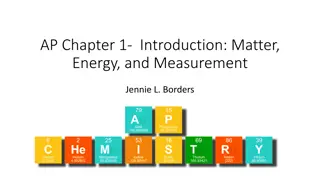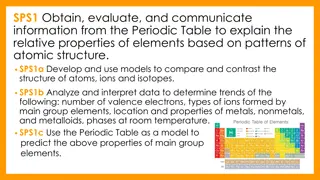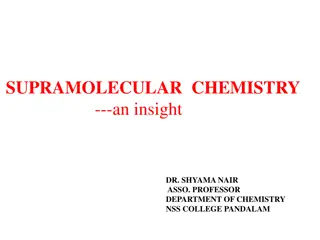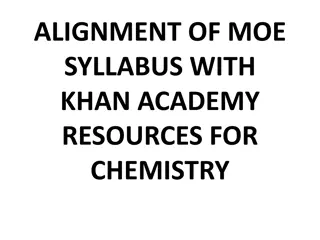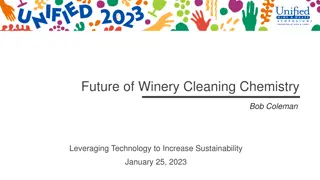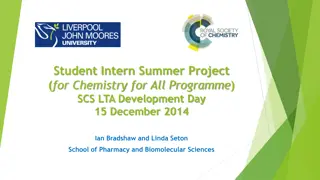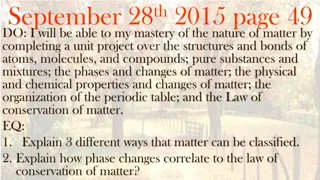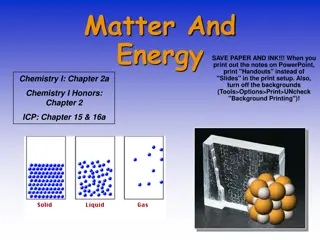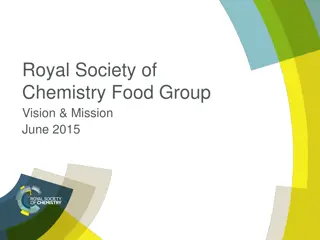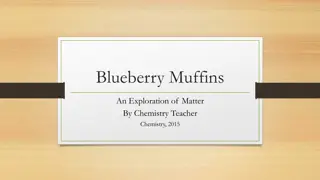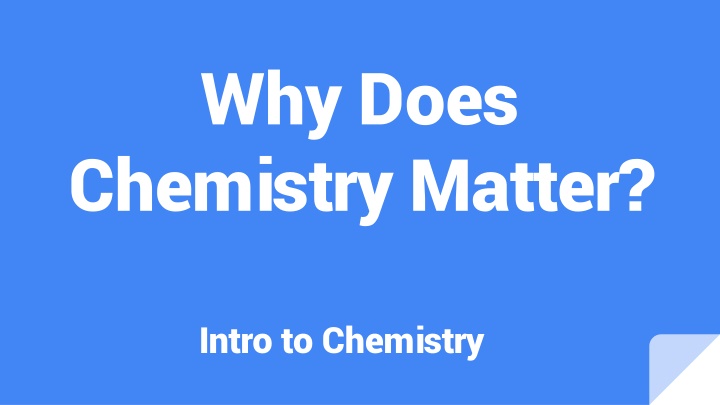
Chemistry in Everyday Life: Solvents, Alcohols, and Neurotransmitters
Explore the impact of chemistry on daily living with a dive into solvents like methanol and isopropanol, alcohol variations such as ethanol, and the effects of neurotransmitters like dopamine and serotonin. Delve into their uses, dangers, and distinctions in this informative content.
Download Presentation

Please find below an Image/Link to download the presentation.
The content on the website is provided AS IS for your information and personal use only. It may not be sold, licensed, or shared on other websites without obtaining consent from the author. If you encounter any issues during the download, it is possible that the publisher has removed the file from their server.
You are allowed to download the files provided on this website for personal or commercial use, subject to the condition that they are used lawfully. All files are the property of their respective owners.
The content on the website is provided AS IS for your information and personal use only. It may not be sold, licensed, or shared on other websites without obtaining consent from the author.
E N D
Presentation Transcript
Why Does Chemistry Matter? Intro to Chemistry
Methanol; Methyl Alcohol Methanol; AKA Wood Alcohol Uses:Strong solvent for biochemical assays. Dangers:Often mistaken for drinking alcohol. Associated with blindness and slow painful death *When you ferment your own alcohol, you have two layers. Top Layer: Methanol Bottom Layer: Ethanol
Ethanol; Ethyl Alcohol Ethanol; AKA Drinking Alcohol Uses:Disinfectant, fuel substitute, antifreeze, and some cases treatment of methanol poisoning. Dangers:Can be broken down into carbon dioxide and water + Oxygen radicals. *Alcohol is made by the fermentation of sugar. *Oxygen radicals are so reactive they can disrupt cell membranes. This is important because all living things are made up of cells. That is why you eat dark fruits containing antioxidants .
Isopropanol; Isopropyl Alcohol Isopropanol; AKA Rubbing Alcohol Uses:Topical anesthetic, used in soaps and lotions as an antiseptic, strong solvent Dangers: Highly flammable, irritant.
Methamphetamine Methamphetamine AKA crystal meth/speed Uses: Stimulates the CNS. Dangers: Addictive, blocks dopamine, serotonin, norepinephrine receptors. *Dopamine, serotonin and norepinephrine are neurotransmitters that regulate temperature, hunger, pain, mood, heart rate, blood pressure, muscle contraction/relaxation. *amphetamine is the main ingredient in Tylenol.
Epinephrine Epinephrine AKA Adrenaline Uses:Naturally produced hormone that controls the Fight/Flight response, synthetically used in EpiPen s to prevent anaphylaxis. Dangers: Prolonged exposure can result in symptoms relating to stimulants of the CNS and PNS
Sucrose Sucrose -Sugar Uses:Food sweetener, processor, adhesive/sealant, combination of Glucose and Fructose. Dangers:Toxic, *cannot be broken down, Flammable *Thats why foods artificial sweeteners have no caloric value. If they cannot be broken down, they do not release energy. Chemicals that cannot be broken down and released from the body become toxins, and will cause more harm than good.
Benzomethylecgonine Benzomethylecgonine Aka Cocaine Uses: Local anesthetic, Stimulant Dangers: Addictive, blocks dopamine, seratonin, norepinephrine receptors, blocks sodium reuptake channels. *Dopamine, seratonin and norepinephrine are neurotransmitters that regulate temperature, hunger, pain, mood, heart rate, blood pressure, muscle contraction/relaxation.
Dihydrogen monoxide DHMO is one of the only chemicals that can be both an acid and a base Gaseous DHMO can cause severe burns Solid DHMO can cause skin irritation and prolonged contact can lead to loss of limbs and even death Leading cause of soil erosion Strong enough to oxidize and even corrode metal There have been reports of death due to accidental inhalation Has been outlawed as an interrogation tool against prisoners Used in nuclear power plants Also used as an industrial solvent and coolant In its pure form, DHMO releases free radical electrons that can break down and destroy organic materials
So what is Dihydrogen Monoxide? Di = 2 Hydrogen = H Mono = 1 Oxide = 0 H2O better known as water
Hydrogen Peroxide Peroxide is the name given by the O=O double bond. Being so similar to water in structure, the addition of a single extra oxygen atom gives H2O2 lytic properties. Water, only having a single oxygen make the molecule stable. The O=O bond acts as a vacuum pulling the atoms in tight. This releases free radical electrons from the oxygen atom. The free radicals are responsible for being so reactive. Because bacteria cells are so simple an non complex the radicals can destroy their molecular structure. This make peroxide great at killing microbes.
Carbon Dioxide CO2 O=C=O Gas at room temperature. Solid CO2 is called dry ice. One of the most abundant molecules in the air. Humans inhale Oxygen, then through a series of bicarbonate reactions that take place in the bloodstream, [O] is converted to CO2 and is exhaled as waste. *One reason we hyperventilate, is because we have too much CO2 in our blood stream leading to become too Alkaline (basic) and our bodies need to expel it. This can lead to a disorder called Alkalosis . *If you hyperventilate for too long, you can expel too much CO2 in your bloodstream where it becomes acidic, and lead to the disorder called Ketoacidosis . A quick fix to this problem is to just allow for more CO2 by breathing into a bag. This allows you to inhale the CO2 that you just expelled.
Carbon Monoxide CO Carbon monoxide is a toxic gas released from combustion engines, that bind 200 times stronger to iron blood proteins called hemoglobin in the bloodstream. Due to the structure of CO, compared to that of atmospheric oxygen [O2] O=O, when oxygen binds to hemoglobin it works properly allowing oxygen to be easily transported and dropped off at its destination. However when Carbon monoxide binds with a blood carrier protein it produces a chemical called carboxyhemoglobin. This new product stops regular oxygen binding hemoglobin from working properly. If hemoglobin cannot function properly, oxygen cannot be transported at we die.

